PSI AUDIO AVAA C20 Active Velocity Acoustic Absorber
Is the bass that you hear from your loudspeakers in your room crisp, articulated, natural, uncoloured, tight, and - at the same time - deep and extended? Headphones do not count. If your answer is yes, then you are one of the lucky few. From my experience, I guesstimate that about 5-8% of listening spaces have an excellent bass response. All the other rooms require a lot of wit and hard work to achieve a good bass balance in them. The PSI’s device may be one of the most – if not the most - effective means to fight modal problems of any professional or home listening environment.
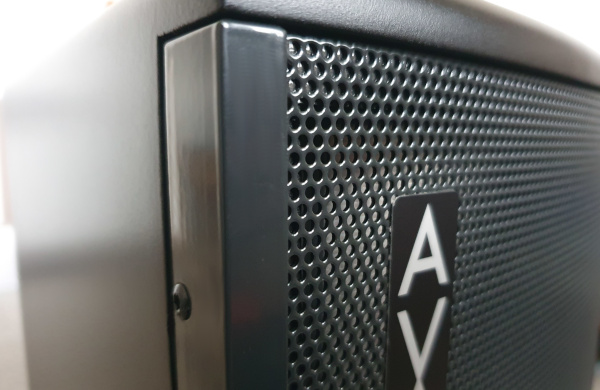
The bass in small rooms
This paragraph’s title can be rephrased as “The bass in all rooms”, for most studios, control rooms, and home listening spaces are small rooms. It means that the acoustic energy is reflected off the walls, some of it mutually cancelled out to create modal dips, some of it combined into modal peaks, narrow or broad. Depending on the wavelength of a particular frequency, the modes add up into boominess and overpressure, or into missing frequencies. The severity of the phenomenon depends on room dimensions, and the position of the speakers and the listener within it. Although some of us are luckier than others, the problem always exists, no room is free of it. Fortunately, as proven by numerous studies, human ear is quite tolerant to dips and peaks if the reverberation (that is the temporal component) is even. Unfortunately, it never is and the excessive ringing – the delayed energy – has destructive consequences, as it smears the music and masks the recorded information.
The techniques of solving this problem have been well documented over 70+ years of recording and listening to music, and all either require passive bass trapping (foams, mineral wools, resonators, damped membranes) or employing an active approach (multiple subwoofers, for instance). The lowest tone on 5-string double bass is 30.1Hz, which translates into a wavelength of 11 meters. To absorb it, the impact wall should be lined by ca 2 meters thick damping material. Not only is it very practical, but costly too, if you consider the properties price per sqm which will be used by mineral wool only. Hemlholtz resonators and membrane absorbers are less bulky, unfortunately they only work at the frequency they are tuned to, and they have their own acoustic challenges at the frequencies they are not tuned to. EQ-ing will not help either, for it can handle peaks (not dips), and is virtually useless for solving the time-related ringing issues. Employing multiple subwoofers, strategically placed and carefully dialed in, requires good subwoofers and an advanced subwoofer management tool, like a processor or an external crossover. This gets quickly very expensive, much more expensive than the AVAA.
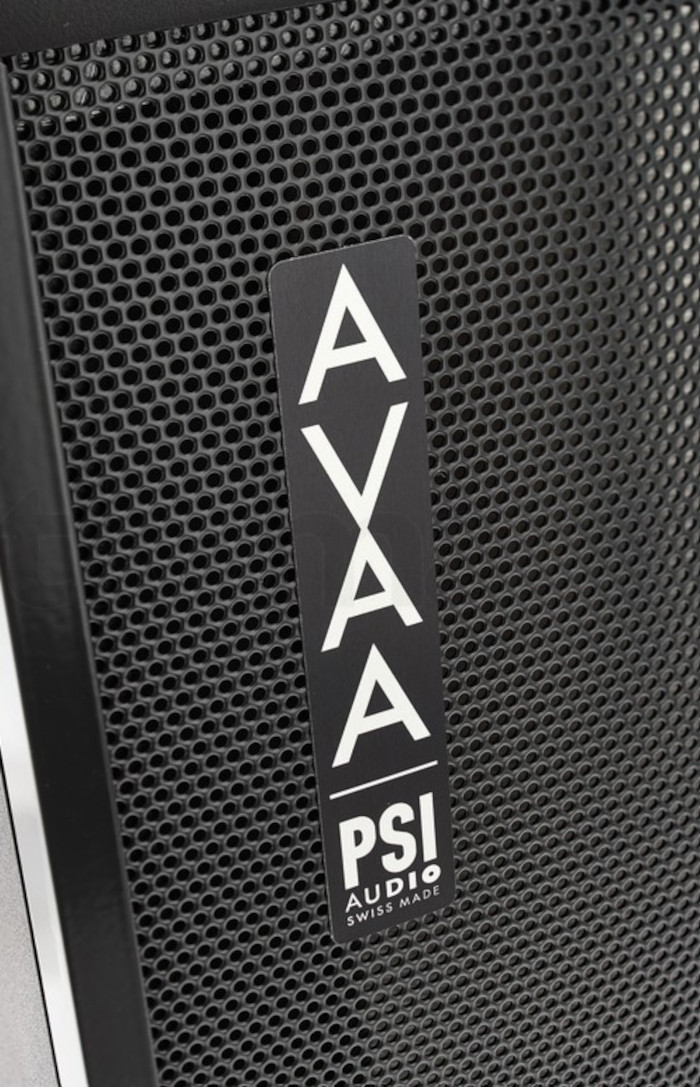
AVAA C20
The AVAA stands for “Active Velocity Acoustic Absorber“. Designed by Swiss PSI Audio, its job is to absorb energy between 15 and 150 Hz. After living with the system for over two months, my estimation is more conservative – I think the AVAA’s working sweetspot is between 25 and 90 Hz. Still fantastic, considering each unit is a size of a subwoofer and its effect covers the whole corner of a standard sized room (the manufacturer suggests that the equivalent sound absorbing area of the AVAA is 4 sqm).
It is a polygon footprint unit so that it could fit a corner of a room easily, with a perforated metal grille covering the front of it. A pressure sensitive microphone controls an analog amplifier that in turn controls an acoustic-suspension driver, interacting with another grille inside. The energy is trapped, nulled, and not returned back into the room. Hence no phase shifts, no delays, no anything. One is tempted to say it is a subwoofer in reversed phase, but this is nonsense. By the way, the attempts to damp the bass energy with a microphone-controlled sub playing in the opposite phase came in fashion many years ago, and the efforts were dropped as they introduced more problems than solutions. PSI Audio is not giving away details about how the AVAA works, and I encourage you to visit their website and watch the video PSI Audio AVAA Demystified - Chapter 2 - How it works to get the flavour. The most importantly, the AVAA fixes the complete bass range, not only on one or two frequencies. The units come in graphite black or flat white MDF, each unit is accompanied by a QA protocol with measured acoustic impedance calibration curve.
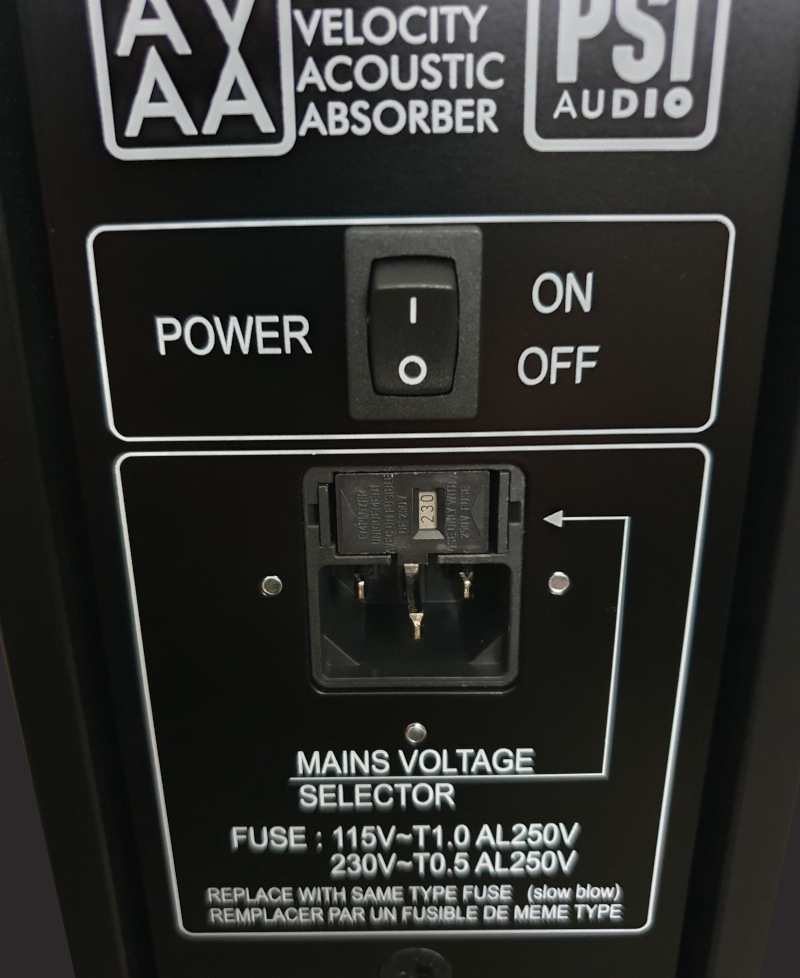
There is nothing complicated about how to control the AVAA. There is an activation switch around the back and that´s basically it. Well, there is also a small trimmer that sets the sensitivity of the built-in microphone. It is recommended to leave it at its maximum setting unless the unit is placed close to reflective surfaces and the mic starts to feedback. On powering up, the AVAA does nothing for a second, then a muted ´pop´ sound is heard. A similar ´pop´ can be heard when I quickly open or close the door in the room, because the door movement sends a wave of air pressure through the room and the mic in the AVAA registers it. When the AVAA is on, a small green LED indicator behind the front grille glows. The AVAA is dead silent otherwise. The unit does not emit any sound or any hum. I like that very much for nothing´s worse than a device that adds its electrical or mechanical noise to the room. There is nothing digital in the AVAA either, so no EMI or HF interference with other pieces of electronics. There are no ´buts´.
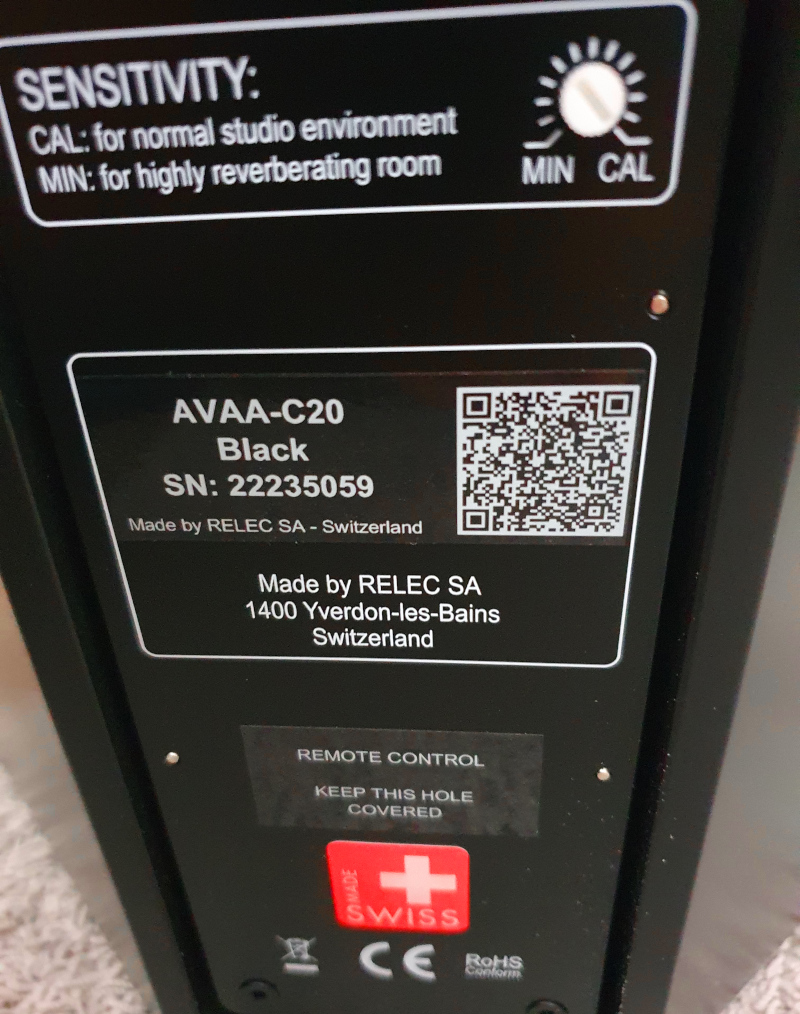
The art of placement
To make the most of the AVAA it must be carefully placed in the room, the spots of bass mode accumulation are of course preferred. Essentially, the AVAA should be treated as any other bass trap or a subwoofer. The easiest way to find out the problem spots is to play a bass rich track (or individual bass frequencies) and walk and crawl around the room, and listen to mode accumulations, that is the rumbling spots. I used a pink noise track filtered at 120Hz, the upper cut-off frequency of the AVAA. I found six pressure points, three in front (centred around 45Hz) and three in the back of the room (centred around 67Hz). However, if you proceed this way, you’ll only identify the frequency problems, peaks and dips, not the time-related problems. For the latter it is best to use bass pulses or frequency sweeps and measure the waterfall plot. Both problems are related, so the good start is to assume that by reducing the peaks and dips the ringing will also be sorted out. Still, it is important to realize that the ultimate goal is not to even out the frequency response (which is unrealistic anyway), rather to even out the reverberation at its minimum. And the AVAA is exceptionally good at that. For all these reasons, I believe that ‘placing it into a corner’ is not enough. Sure, often there are not many other options, however if you have some, go and explore them systematically.
By systematically I mean it may be beneficial to try whether farther from a wall or higher towards the ceiling does not deliver better results. I also found that the degree of toe in changed the way the AVAA worked. Also, in case the AVAA is placed in your proximity, one must consider the unit’s own reflectivity on high frequencies. Also, the AVAA will not fix all the acoustic issues – the better the room is treated, the better results can be expected. So, there are many variables, and all have some influence on what you will hear in the end.
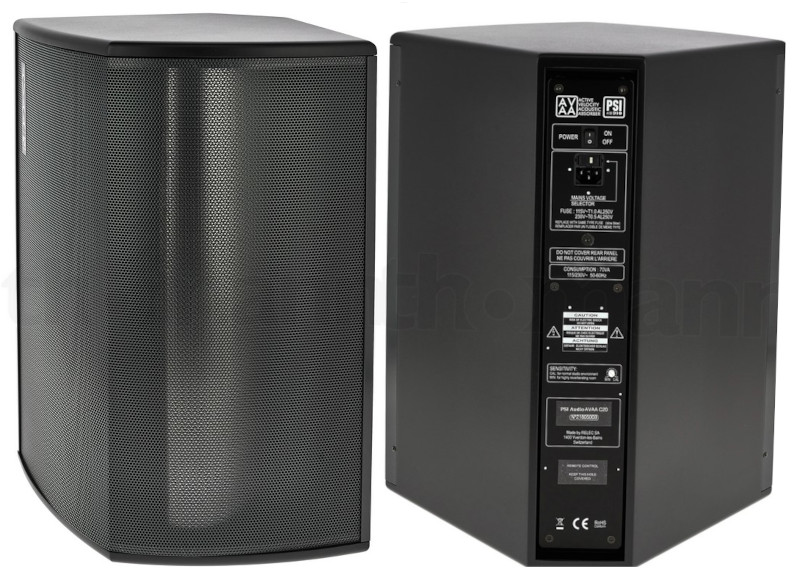
What can one AVAA do?
As soon as the best placement, height, and toe in/out are identified, before and after comparisons are very impressive. For the record, my first AVAA ended up in the rear right upper corner of the room. I tried first this position using a makeshift wooden construction to lift the AVAA up there, and after the exact position was nailed, I hung the AVAA with the help of Connect IT Spider projector holder. The beauty of this solution is that I am able to adjust the tilt and toe-in as much as I like. For the critical listening part, I used Stereoplay’s 2014 Natural Bass sampler which contains both bass heavy musical selections ranging from rock to classical, as well as pure recordings and chromatic cadences of single acoustic instruments – a plucked double bass, a bass guitar, a concert drum. It is wonderful material on its own for the exploration how sound behaves in one’s room or studio. I listened to these tracks ad nauseam and the AVAA’s performance was superbly consistent.
The bass lines became better delineated from and within the mix. The music gets easier on ears, as if the pressure on eardrums had dropped. The soundstage got much deeper and transformed one level up in lateral separation, as if the instruments were less bleeding between the channels. The mono signal of the electric bass got centered in the exact middle without any of its harmonics travelling left or right from the center line as the guitar pitch changed. All of this is a result of the bass transients not hanging in the room and thus not obscuring next-in-line musical events. It takes several tracks to adapt, though. A certain amount of ringing can be mistaken for “deeper bass” sometimes, for the time and phase delays cause the bass to sound thicker and weightier through smearing. This fattening, often heard in vintage recordings, may sound quite attractive. However, if you spend thirty minutes listening to the “no ringing” sound provided by the AVAA, then - when the unit is off – your ears will immediately pick up the flabbiness and loose timing. And I can guarantee that you will not like it a bit.
After experiencing the wonder of one AVAA for two weeks, I promptly organized another loan unit from the local distributor. The same placement procedure was required, this time with the first AVAA activated because it changed (improved) the room modality. In my room, the second AVAA ended up behind the right speaker, precisely 13cm above the floor, and I had to cut one of my IsoAcoustics stands to this height. Was it lower or higher, the result was less remarkable. Interestingly, both my AVAAs ended up on the right of the room which gave me the best performance. I tested several symmetrical placements, but none bested this placement scheme.
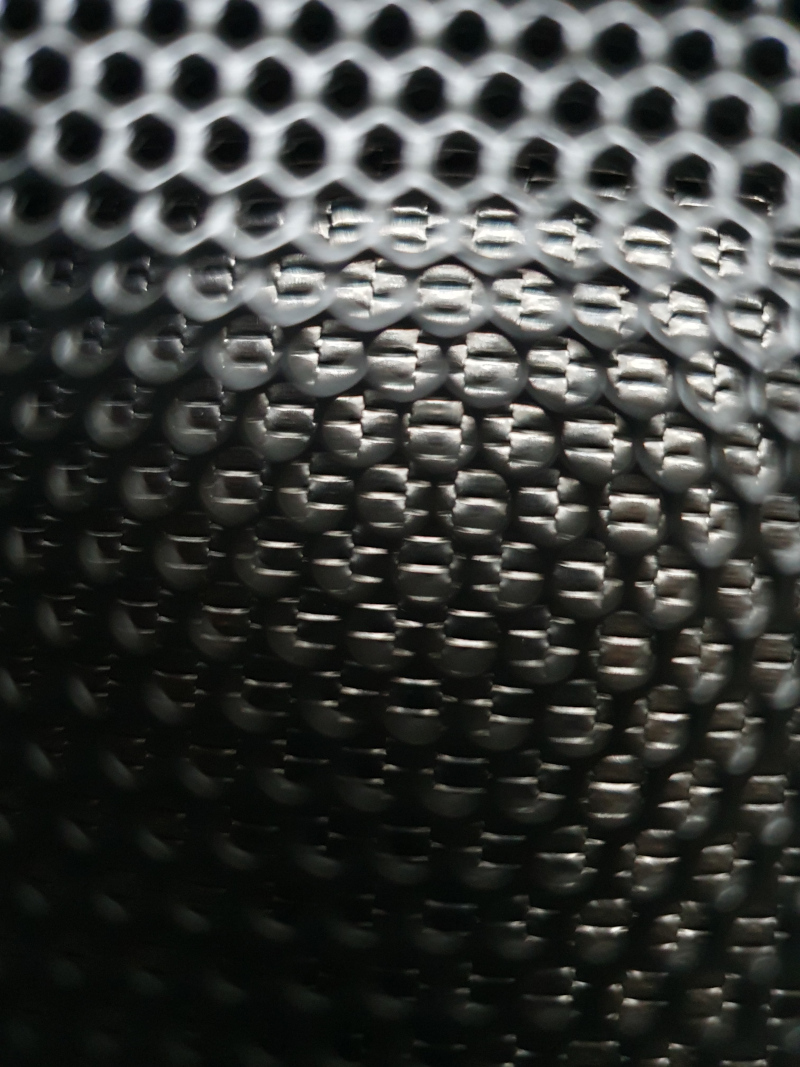
What can two AVAAs do?
With both the AVAAs employed, I noticed how much the recorded ambience became clearer. In hindsight this could have been expected. The ambient cues are low level signals, often in subsonic domain, and as such they are vulnerable to masking. When the ringing is removed, they emerge, and the spaciousness and depth are restored. This way the roll of the big orchestral drum (panned from left to right) became so much more distinct within the bubble of its ambient surroundings. With both the AAVAs deactivated, the drum was perhaps more thunderous, but mallet strokes became less differentiated from each other, and the depth of image was flattened.
However, as I played a track from Japanese Kodo ensemble, it was with the AAVA when the drum strokes got more impactful and powerful, as if the energy, previously spread over hundreds of milliseconds, got concentrated into a much shorter interval.
The Finale of Saint-Saens’ organ Symphony No.3 (Eschenbach, Philadelphia Orchestra, Telarc) sends seismic waves of pipes, crashing cymbals, and brass fanfares into the room, framed by swelling strings and keys, all encompassed by large and transparent ambience. With the AAVAs, the orchestra became much better discernible, as if the speakers were allowed to draw a floor plan. The brass had better bite, the strings had better bloom, and the depth stretched into a continuum as if the front wall had been erased. PSI Audio suggests that installing the AVAA is like removing a part of a wall, and I cannot agree more. Before the AVAAs, when I leaned forward or shifted backwards, I could feel the unevenness of bass mode distribution in the room. I was pretty much confined in an ‘ideal’ spot to maintain a reasonable balance. This was gone with the AVAAs and moving forward or backward on the central line between the speakers had no effect on the bass spectra perception. When I stand in a corner behind the right speaker, there is no low frequency build-up whatsoever. Switch the AVAA off and the loud rumble is back.
What can three AVAAs do?
I have no idea – there was no more spare unit available from the distributor. What I can say is that the PSI Audio AVAA C20 active velocity absorber is not my first take on taming the low frequency modes in my room, however, it is the only one really effective. Neither bulky Isover rolls, nor passive Vicoustic’s Vari Bass units, nor a three-sub set-up came even close to what I achieved with the AVAAs. Another feature that I like is if I change the listening parameters by installing a different pair of loudspeakers or an additional sub, it is a breeze to ‘recalibrate’ the AVAAs in the room, for they are not a part of a fixed installation. And should I wish, I can deactivate one or both AVAAs in a second to restore the previous ringing state, which is hardly possible with conventional acoustic treatment.
I agree that the PSI AVAA C20 should be more affordable, and I assume that only one unit will not be enough for any but the smallest spaces. However, unlike many other high-priced acoustic accessories that are one-thousand-and-one variations on thick panels, this is a smart and purely engineered device capable of providing a reference grade listening environment by a flick of the switch. I cannot recommend it highly enough.
Price at the time of the review: 62 000,- per unit
Manufacturer's website: www.psiaudio.swiss
Distribution: Disk Multimedia, Boskovice, +420 516 802 488
(C) Audiodrom 2023



